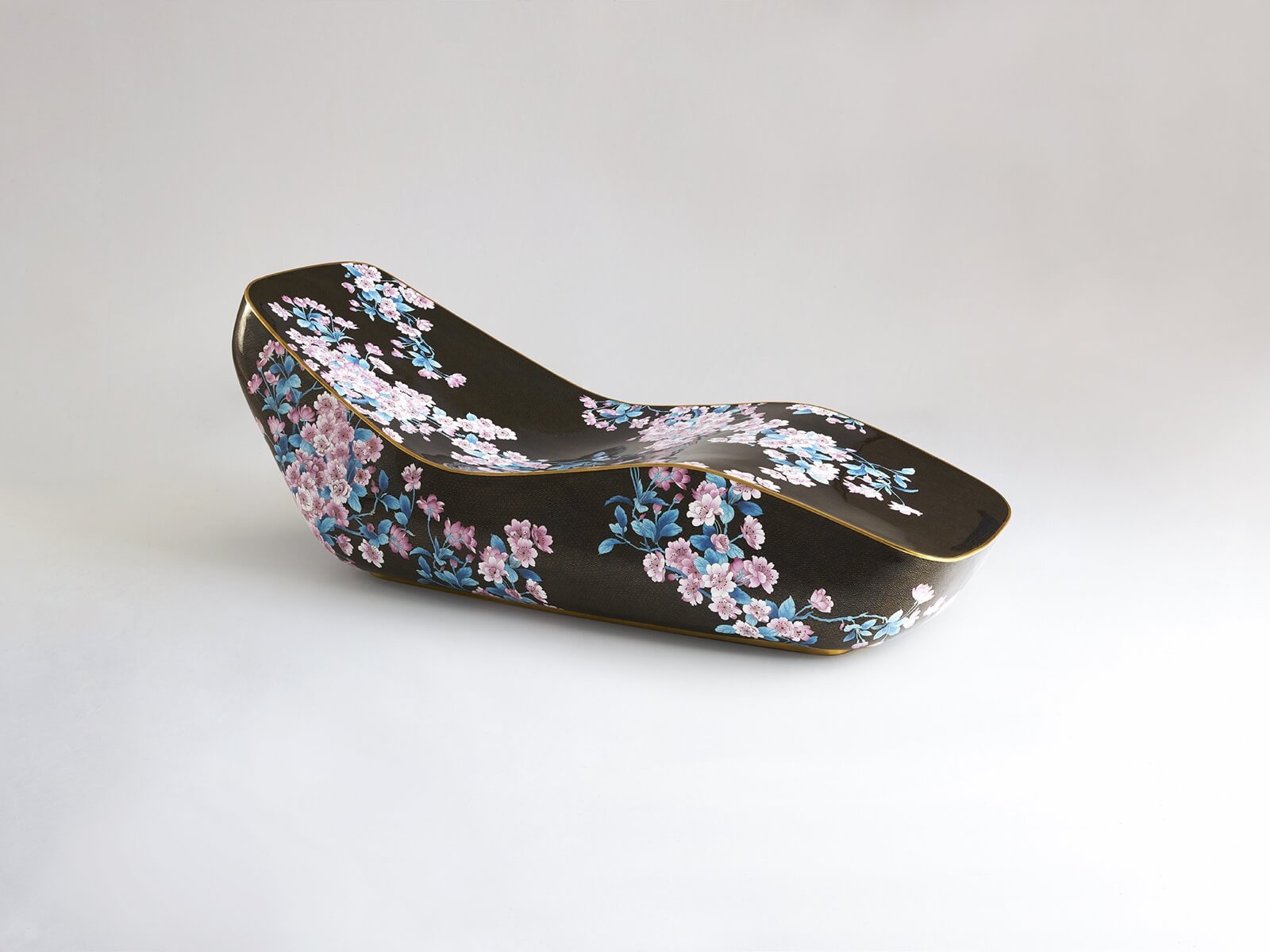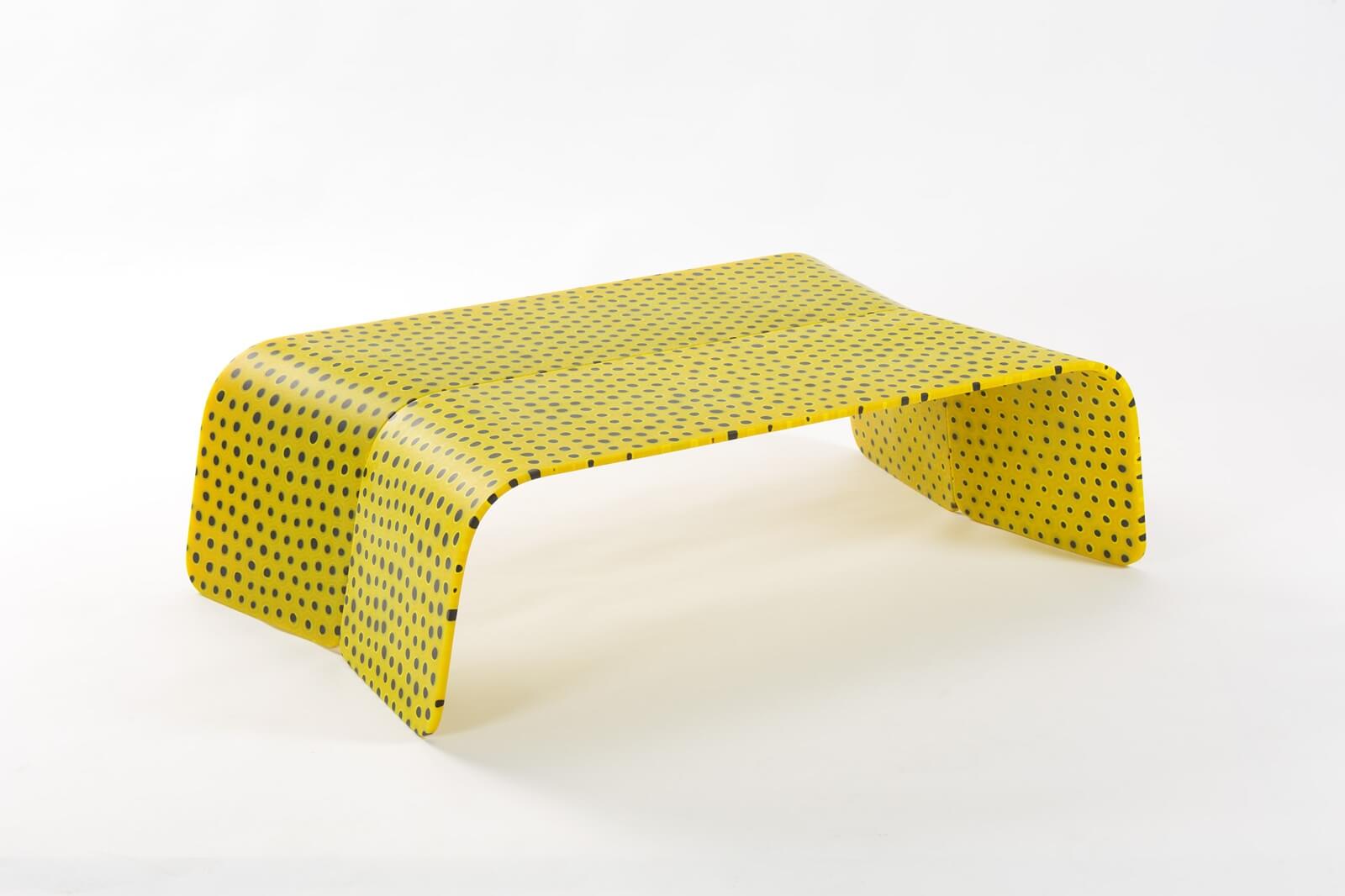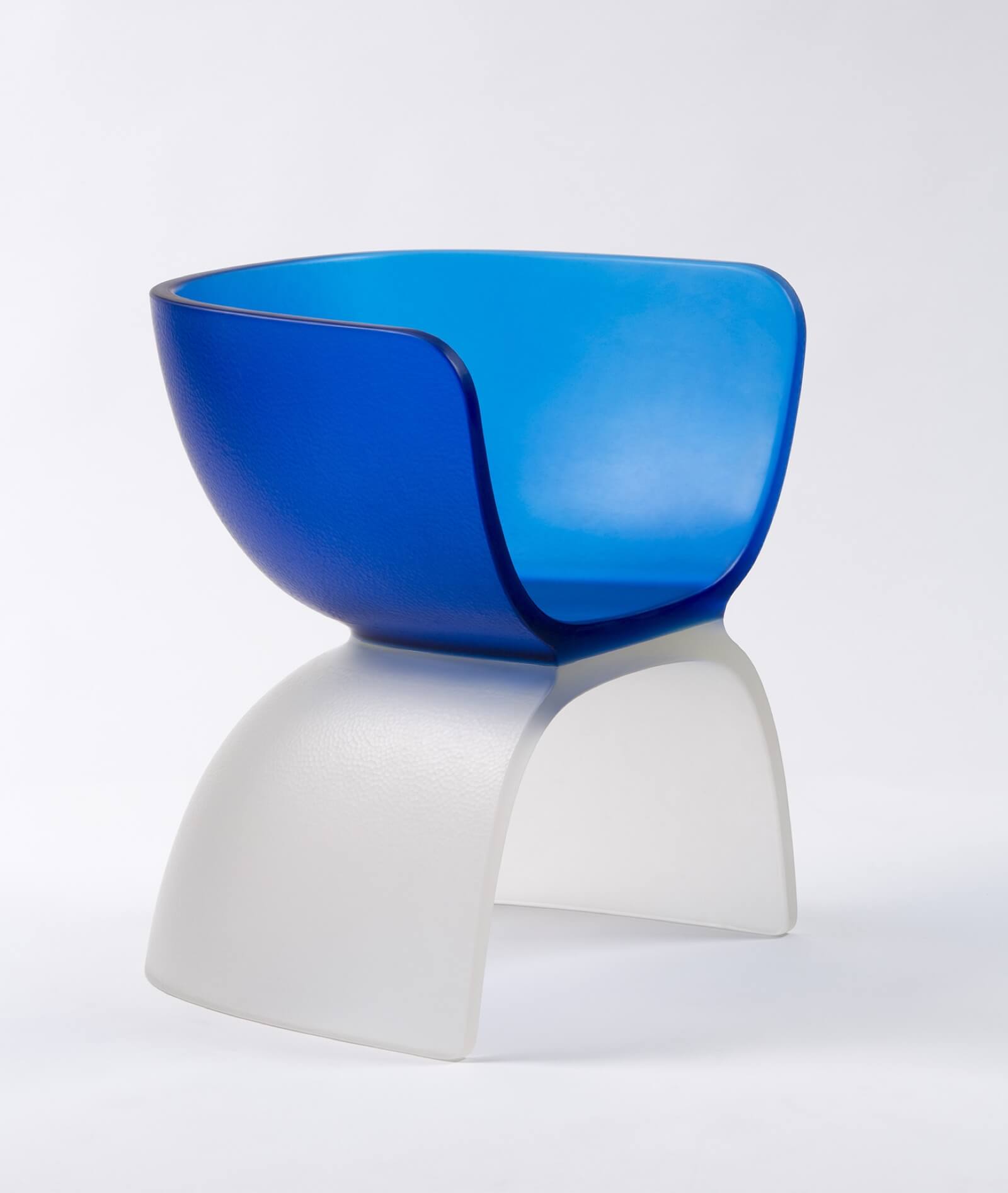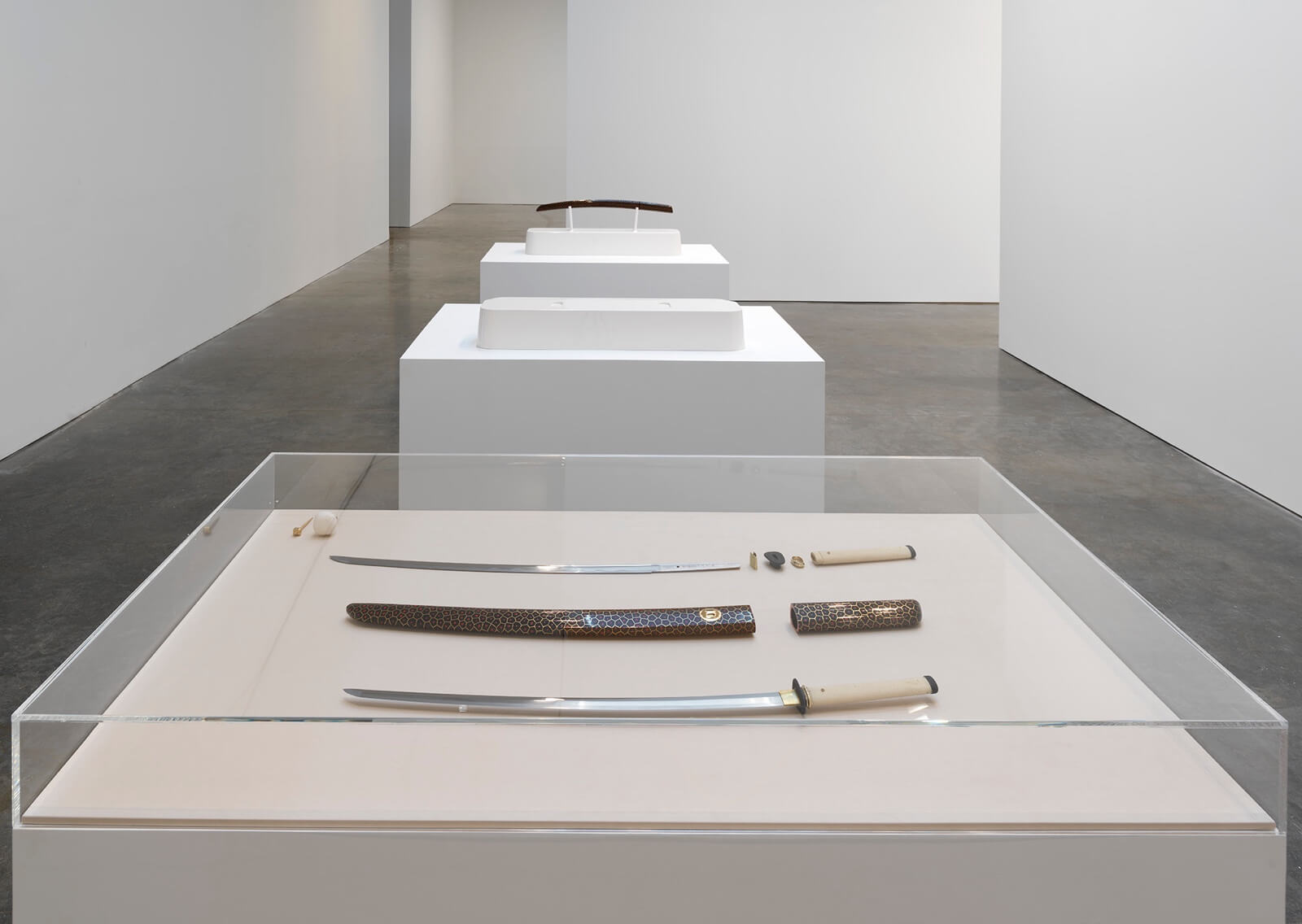Marc Newson
Pushing the boundaries of collaboration, creativity and craft.
Gagosian Gallery, West 21st Street, New York
17th January – 10th February 2019
VISITORS TO MARC Newson’s lavish design exhibition at Gagosian Gallery on West 21st Street could have been forgiven for wondering if they’d been transported back to the 18th century — albeit an oddly minimalist version of the age of Rococo. That’s not because of the deluxe surfboards that were on view, though these works were transporting in their sleekness and vivid colours. It’s that Newson, who has roots in jewellery and silversmithing, seemed to be acting less as a designer in this context, and more like one of the decorative arts entrepreneurs who masterminded the interiors of the Ancien Régime: the marchands-mercier. Literally ‘a merchant of merchandise’, the marchands were somewhat akin to today’s interior designers, in that they were free agents who skirted the restrictions of the French guild system. This enabled them to conduct business across the boundaries of technique and medium; they might have sourced a series of porcelain plaques from Sèvres, or pieces of Japanese lacquer in order to mount them on a cabinet produced by an ébéniste, or taken a porcelain vessel from China and mounted it on a gilt-bronze stand for display. Excelling in the art of placing exotic goods in familiar luxurious contexts, marchands were not craftsmen, and typically had not come up through the rigorous apprenticeship programs that determined who was admitted to a guild, and who wasn’t. But they did know style and taste, and where to find the best examples of every craft, from ceramics to cabinetmaking.

Marc Newson, ‘Cloisonné Black Blossom Lounge’, 2017
© Marc Newson. COURTESY: Gagosian / PHOTOGRAPH: Xiangzhe Kong
Newson did not fabricate the pieces on view here by hand, or even oversee their work in his own studio. Rather, he travelled the world and employed a small army of skilled artisans to make these lavish, even spectacular works, reviving some age-old techniques in the process. Some of the most striking pieces were the cloisonné chairs, which stand out as technical marvels — indeed, there’s a reason you rarely see cloisonné furniture. Aesthetically, they do not echo Newson’s older work. He first rose to fame by making muscular, space age-inspired furniture like the iconic ‘Lockheed Lounge’, which recalled the futuristic, 1930s’ designs of Norman Bel Geddes and Raymond Loewy. He has since collaborated with Apple, Nike, Hermès and Louis Vuitton, among others, designing everything from sneakers and shearling backpacks, to Apple EarPods. So this group of works at Gagosian, which includes an Aikuchi sword fabricated by Japanese Living National Treasure Saburo Nobufusa Hokke, pointed not to a high-tech future, but to a rich and sensuous past.

Marc Newson, ‘Murrina Low Table Yellow’, 2017
© Marc Newson. COURTESY: Gagosian / PHOTOGRAPH: Jaroslav Kvíz
Newson travelled the world and employed a small army of skilled artisans to make these lavish works, reviving some age-old techniques in the process
BUT WHOSE PAST? If Newson is a modern day marchand, his exhibition could have been understood as a contemporary wunderkammer, a cabinet of curiosities containing treasures from all over the world. To make the cast chairs, Newson worked with master glassmakers in the Czech Republic — a glassmaking mecca — to produce a group of murrina pieces, in which canes of coloured glass are pressed together then sliced in cross-section to reveal a pattern, like a Battenberg cake. The cast glass chairs were made in the same workshop, but Gagosian has not revealed exactly where that is. To produce the cloisonné pieces, Newson went to China, only to find that there were no extant factories that could do what he needed for this project. So, with Gagosian’s help, he initiated the construction of an enormous new kiln at a factory near Beijing.

Marc Newson, ‘Blue Glass Chair’, 2017
© Marc Newson. COURTESY: Gagosian / PHOTOGRAPH: Jaroslav Kvíz
Cloisonné originated in the ancient Near East, and made its way to China in the 14th century. By the early modern period, Europeans developed a robust appetite for Chinese cloisonné goods, importing snuff boxes, vessels and bowls in great quantities. Newson’s creations have the effect of blowing up traditional cloisonné to an almost absurd scale. Each piece of cloisonné begins with an intricate pattern rendered on a metal surface, creating channels in which coloured enamel can melt when the piece is fired, forming a complex, multi-coloured design. This is tricky to do on a snuff bottle, and doing it on the entire surface of a desk or chaise longue practically defies belief. And again, we don’t know the identity of the craftspeople in Beijing who brought these objects into existence.

Exhibition installation view, 2019
© Marc Newson. COURTESY: Gagosian / PHOTOGRAPH: Rob McKeever
However, we do know who fabricated one of the exhibition’s small showstoppers: the aforementioned Aikuchi sword by the 9th generation master sword maker, Saburo Nobufusa Hokke, who lives in Tōhoku. This project grew out of a collaboration between Newson and the government of Japan, who invited designers from abroad to Tōhoku in the wake of the 2011 tsunami, enlisting their help in rebuilding the centuries-old craft infrastructure of the region. This is the only example in this exhibition of a true collaboration, in which the identity of Newson’s overseas counterpart is known. Given the feats of design, craftsmanship and engineering required to make the other works on view here, it’s a real loss that we don’t know whose skilled hands we have to thank for them.
Gagosian– a global network of art galleries specialising in modern and contemporary art



